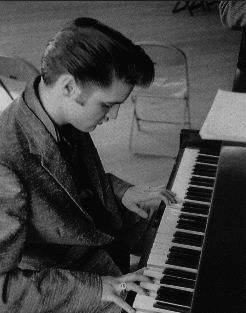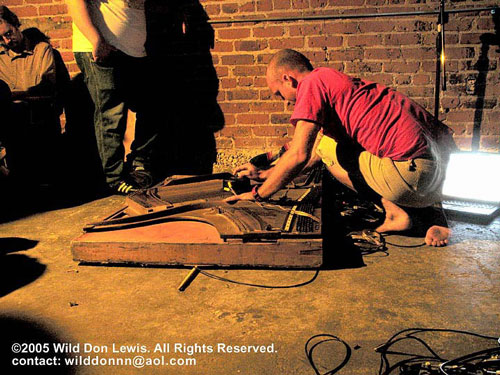17 May 2007, 08:39 AM
rontunerPiano picture of the day
Loookit all the purdy colors!

21 May 2007, 04:54 PM
OperaTenorquote:
Originally posted by rontuner:
A Photoplayer (movie house piano)

Is that the same piano featured
here?
21 May 2007, 07:42 PM
EHpianist
Posted this on a separate thread here, but just so it sticks around after the occasional thread culling I am posting it here, where it belongs!
This is a photo from the Gershwin bio I have been reading.
"scene from the 1930 film The King of Jazz. Gershwin's Rhapsody in Blue was given lavish treatment, with Paul Whiteman's orchestra perched on a giant piano seating five 'pianists'."
22 May 2007, 01:48 PM
EHpianistHow much did you charge for that job???!

22 May 2007, 03:04 PM
rontunerOoooo, nasty people! At least I didn't have to get that one down from a tree...

23 May 2007, 08:46 AM
rontunerThis is an interesting right hand technique:

25 May 2007, 09:07 AM
rontunerThis guy's easier to recognize:

05 June 2007, 10:37 AM
rontuner
In 1856 The American Telegraph Company purchased the Phelps and Dickerman factory in Troy and placed George Phelps as its Superintendent. Phelps, utilizing his experience with the House and Hughes instruments, continued to conceive improvements to a printing telegraph system and what eventually evolved in 1859 was one of his most notable inventions.
The Phelps Combination Printer or, The American Combination Printer, as it was sometimes called. Although very different from previous printers, it was called The Combination because Phelps took certain features of the House and Hughes printer and then added his own improvements. This printer would become recognized as the most successful type printing telegraph in the world. Phelps used a piano-like keyboard similar to the one on the House printer. It consisted of 28 keys, including a dot and a space key. He retained the improved synchronization concept of the Hughes. He also used his newly invented electro-magnetic governor to obtain higher stable speeds and made provisions for a choice of available power sources.( air, steam, and later electric motor) Soon after its introduction this printer was put to heavy use for nearly twenty years on some of the more important circuits in the East between Boston, Albany, New York, Philadelphia, and Washington . Two leading authorities on telegraph technology in the 19th century had the following to say about this printer. Franklin Pope: " As an example of consummate skill in mechanical design, this apparatus stands unapproached in its department of technology." George Prescott: " The operation of this instrument becomes more and more satisfactory every day, and is looked upon by all who have become familiar with its performances as the best telegraphic apparatus which has yet been produced." Its output was once measured during a eight and a half hour period between New York and Philadelphia. It transmitted 670 commercial length messages during that period and part of the time the instrument sat idle. Some of the instruments showed only minimal wear after printing over 5000 miles of paper. It should also be pointed out that in comparing the efficiency of this printer with conventional Morse transmission, that it typically takes multiple pulses of current to send a character using Morse Code on a circuit. With this printer, a single pulse can produce any character.
05 June 2007, 11:22 AM
ZorbaBeing a fan of Teletype technology, I find this fascinating! Thanx for posting this.
06 June 2007, 05:25 PM
ZorbaIts a good book (I own a copy).
07 June 2007, 11:59 PM
OperaTenorHas this one been posted before? It looks familiar, but I wouldn't want Zorba to miss it if it hadn't.
An Evans Bros. upright:













